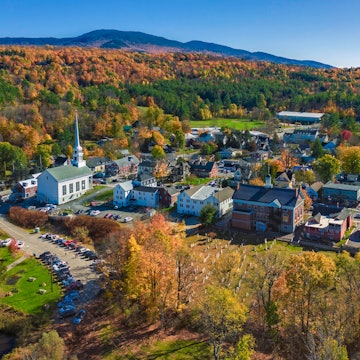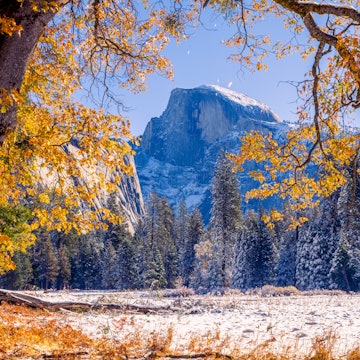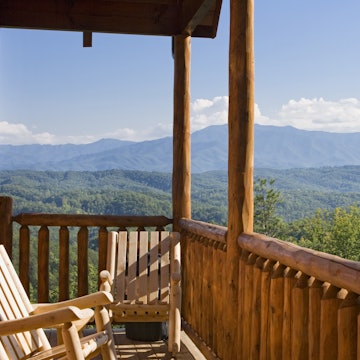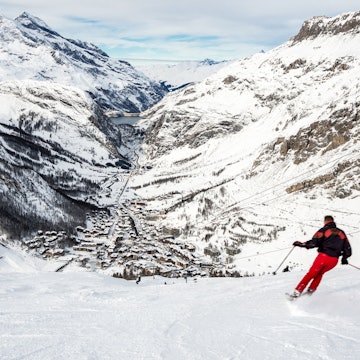

Two national parks and 35 state parks call West Virginia home © ablokhin / Getty Images
The Appalachian Mountains ripple across West Virginia, their forested slopes hiding a network of trails that plunge down gorges, roll past waterfalls, navigate boulder fields and ribbon along ancient rivers.
From the high-elevation wilds of Dolly Sods to the sandstone boulders of Beartown, unique natural features are geologic highlights. Mining and logging history adds context to many of the views, while two national parks – Harpers Ferry and New River Gorge – call the Mountain State home. And the 35 state parks, which showcase some of the state’s best trails? All of them are free. Here are six trails to get you started.
Endless Wall Trail
Best hike for big views
3-mile loop, 1-2 hours, easy to moderate
With dizzying views of the New River Gorge and its ancient sandstone cliffs, the Endless Wall Trail in New River Gorge National Park packs a memorable punch. The cliffs along the trail are popular for rock climbing, and on nice days you’ll likely share the path with climbers heading to and from the rim.
From the Fern Creek parking lot, the trail meanders through a thick forest marked by rhododendron thickets, moss-covered logs and the eerie creaking of the towering trees, which sway in the rim-top breezes. After crossing Fern Creek, the trail ribbons along the edge of the canyon, where short spur trails end at sheer-walled rock ledges. After one mile, a signed trail cuts toward the Diamond Point Overlook.
Only a small percentage of the world's rivers flow north, and the New River is one of them. One of the oldest rivers in the world, the New has carved a relentless path through the Appalachian Plateau. Evidence of its power unfurls dramatically from the southern edge of Diamond Point, where you’ll have an unobstructed view of both the water and the seemingly endless cliffs. For a pleasant 2.2-mile out-and-back, return the way you came.
Otherwise, continue along the rim to the Nuttall trailhead parking lot on Lansing-Edmond Rd. For a three-mile loop, carefully follow Lansing-Edmond Rd north for a quarter mile or so back to your car. There’s a narrow gravel walkway beside the road. Note: This trail gets busy. If the parking lots are full, do not park on the road. You might be towed.
Seneca Rocks Trail
Best hike to an iconic landmark
3 miles roundtrip, 2 hours, moderate
Rising nearly 900ft, the craggy peaks of Seneca Rocks cut a dramatic profile against the skyline in the remote wilds of Monongahela National Forest. The first recorded rock climbing ascent was in 1939, and droves of climbers from up and down the East Coast have driven to this far-flung spot ever since. Its sandstone flanks hold more than 400 routes, but land-loving mortals can also enjoy up-close views of the formation – they just need to hike the 1.5-mile trail Seneca Rocks Trail.
From the Seneca Rocks Parking Area, the trail crosses the North Fork of the South Branch of the Potomac River, then rolls through a hardwood forest. A series of switchbacks kicks in, rising 700ft. The trail ends at an observation deck at the northern end of the steep-walled formation. Views of the valley, the North Fork and surrounding peaks spread out majestically beyond the white-gray rocks. Spruce Knob, the state’s highest point at 4,863ft, is also visible to the south.
For more information about recreational activities in the national forest and to learn more about rock climbing here, stop by the Seneca Rocks Discovery Center, which is a short walk from the parking lot.
Beartown State Park Loop
Best hike for families
.5-mile loop, 1 hour, easy
Despite the name, it’s unlikely that any bears will be spotted in this state park. But kids will have fun darting around the fragmented boulders that line this short lo op on Droop Mountain. The enormous rocks are pieces of ancient sandstone that have broken off from the mountain’s eastern summit. The park’s name was inspired by the many caves and crevices in the boulders, which resemble black bear dens.
Tucked deep in a shadowy forest dark with hemlocks and yellow birches, the trail follows a wooden boardwalk that drops, climbs, twists and sometimes squeezes through a veritable wonderland of moss-covered boulders, sheer rock faces and overhanging cliffs. A few of the rocks, with their green, fern-topped crowns, resemble creatures from a fantasy novel. Signage along the boardwalk discusses the park’s geology and its lush plant life.
The park is 25 miles north of Lewisburg and open April through October. Extend the adventure with a trip to nearby Droop Mountain Battlefield State Park, where a wooden lookout tower provides a sweeping view of the Greenbrier River Valley and nearby mountains.

Dolly Sods Wilderness: Bear Rocks Trail to Rocky Ridge Trail
Best hike for dramatic views
8 miles round-trip, 4-5 hours, moderate
With its rocky and windswept terrain – evocative of the mountain regions of southern Canada and New England – this high-altitude wilderness area atop the Allegheny Plateau is remote, mostly empty and starkly gorgeous. You may encounter crowds on summer and fall weekends, particularly near Bear Rocks Preserve and its high-elevation views, but spotty cell-phone service and gravel forest roads leading to the trailheads are deterrents for some. Don't stray far from the trails – the area was used as a WWII training ground, and there may be unexploded ordnance in the wilderness.
From the Bear Rocks trailhead, numerous loops are possible – but be aware that as a wilderness area, signage is minimal, and route-finding can be tricky. The Bear Rocks Trail crosses a vast meadow, also known as a sods, that was created after the area was logged in the early 1900s. Today it's covered with rocks, shrub grasses and red spruce. At 2.4 miles, turn right onto the Raven Ridge Trail, following it across more meadows and through a small forest to the Rocky Ridge Trail.
Follow the latter south along the high-elevation ridge line, then cut left to a prominent patch of sandstone boulders. With a panoramic view of mountains to the west, it's a nice picnic spot. Retrace your steps. It’s possible to loop back via the Dobbin Grade Trail – just note that it can be hard to navigate the Rocky Ridge Trail through the boulders to reach the Dobbin Grade trailhead. Parts of the Dobbin Grade can get boggy.
Kaymoor Miners Trail
Best hike for historic scenery
2 miles, 2 hours, strenuous
As the New River carved its way through the Appalachian Plateau, it gradually exposed seams of high-quality coal trapped deep in the rock. Once discovered, mining companies descended, and small communities sprang up to support the excavating operations.
Established in the 1890s, the Kaymoor mines were some of the most productive in the gorge before ceasing operations in 1962, churning out more than 16 million tons of coal. The short-but-steep Kaymoor Miners Trail, which begins near Fayetteville, drops from the rim of the gorge via steps and switchbacks to the mining site. From there, 876 steps plunge to the ruins of a coal-processing plant and the abandoned townsite near the river. Hikers should leave artifacts along the trail undisturbed, and be aware that the train tracks along the river are still active.
The Kaymoor Trail runs parallel to the river along the middle slopes of the gorge, and it intersects the Kaymoor Miners Trail where it passes the mine. A two-mile section of the Kaymoor Trail is closed due to unstable slopes, so plan your route carefully if you want to link to other trails.

Canyon Rim Boardwalk & Sandstone Boardwalk Trails
Best hike for accessibility
Canyon Rim Boardwalk, .2 miles roundtrip, 15 min, easy
Sandstone Falls Boardwalk, .4 miles roundtrip, 15-30min, easy
Two accessible boardwalk trails in New River Gorge National Park end at scenic overlooks. The Canyon Rim Boardwalk Trail begins near the Canyon Rim Visitor Center and ends with a tree-framed view of the graceful New River Gorge Bridge, one of the longest single-span arch bridges in the world. From the overlook, 178 steps drop to a second viewpoint.
The Sandstone Falls Boardwalk Trail is 55 driving miles south of the Canyon Rim Visitor Center. The trailhead appears after a scenic 8-mile drive along the New River. The fully accessible boardwalk crosses several forested islands before ending at a riverside observation deck. The 1,500ft-long falls stretch photogenically across the river just upstream, dropping 10ft to 25ft.
You might also like:
West Virginia's New River Gorge is full of wild and wonderful outdoor adventures
West Virginia will pay remote workers $12,000 to move there
24 Hours in Charleston, West Virginia
















